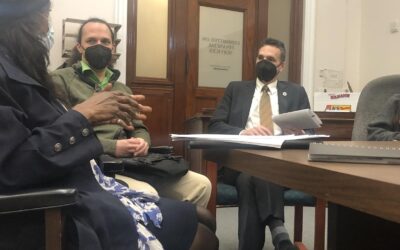Making Sense of Nuclear Waste
The Association for the Anthropology
Judi Pajo (Pace University)
November 2, 2016
Nuclear energy is having a busy summer. While the industry is keeping its 99 US nuclear plants running, at close to full capacity, to supply for the heightened electricity demands of this summer’s heat, the Department of Energy (DOE) announced investing $82 million. This money will go into nuclear technology advancement and research. Another nuclear operator made public its intentions to get in line to seek a second 20-year license renewal and the window for public comments regarding a consent-based siting process for nuclear waste storage that the DOE had opened at the end of 2015 came to a close.
As the regular readers of the Association for the Anthropology of Policy (ASAP) column know, we like to cover how anthropology contributes to our understanding of what happens in the public policy world. A project, which I have been working for some time, may do just that for the nuclear energy policy world. The project is to pitch, in an anthropological take, to our understanding of the broad and complex contexts out of which public policy on nuclear energy arises. It was initially developed as an anthropological lens for looking at the discursive existence of nuclear waste in American culture. Two papers from it were published recently.
In “Two Paradigmatic Waves of Public Discourse on Nuclear Waste in the United States, 1945-2009,”which came out in PLoS ONE in June, my aim and effort was to provide a historical view of nuclear waste as a sociocultural phenomenon in America to look at nuclear waste as an emerging reality that is distinct from the material existence of nuclear waste. The most significant finding set out in this paper is the identification of two overarching paradigms through which nuclear waste has been and is conceptualized in the United States. An optimistic and future-oriented conceptualization that focused on benefits of exploitation for peace and prosperity, contrasted by a litigious and sanctioning conceptualization of nuclear waste as primarily a source of harm. The paper also sets out a periodization of the two major waves of public discourse to which these paradigms correspond; 1945-1969 for the first paradigm, peaking under President Eisenhower, and 1969–2009 for the second, peaking under President Carter.
If you get the feeling that the second framework resembles that under which we make sense of nuclear waste today, you are not alone. But how exactly did we get from a public view of nuclear waste as a potential source of good to the one synonymous with a serious cause for caution? In other words, how was that stark conceptual contrast bridged to this shore of today’s intuitively recognizable conceptualization of nuclear waste? In “Danger Explodes, Space Implodes,” which was published in Energy, Sustainability and Society last December, I take a close look at the evolution of the environmental discourse on nuclear waste. I focus on the first wave of public discourse identified above, as this wave curled between 1945 and 1969, and as that discursive motion turned out to eventually wash us very close to this shore on which you may feel we stand today. The shore where nuclear waste is unquestionably viewed as an inherited harm and future threat.
It turns out that 1945-1969 was a critical period in the evolution of the American public discourse on nuclear waste. Over these years, views of nuclear waste evolved through a series of conceptual stages. The first stage was the introduction of nuclear waste into public discourse. Nuclear waste was initially seen as a byproduct of actions of good, including the exploitation of nuclear reactions for the winning of peace, yet at the same time also a byproduct that was suspected of potential distant threats. Next came a period of assessment of that threat. How threatening was nuclear waste really? How exactly did nuclear waste threaten? Another period then followed in which a general conceptualization of nuclear waste as danger crystallized in the American public discourse.That stage was finally succeeded by one in which this understanding of nuclear waste as an implacable hazard consolidated its sway on the public discourse to the eventual point at which nuclear waste could no longer be entitled to a physical presence.
While the above might not exactly come across as the most wildly sensational way of spelling things out, understanding the American public discourse on nuclear waste as a sociocultural phenomenon,that underwent a remarkable evolution between 1945 and 1969, does in fact contrast starkly with certain views that are widely held.
To be clear, the project was not started with the purpose of disputation and even though I believe these understandings that were developed to be novel, the papers do not present them with the goal of being disputative. Rather, I may best describe my key aim to have been the formulation of an understanding of nuclear waste discourse that would be anthropological, in terms of its sensibilities and contributions, and at the same time also scientific, in the sense of detailing the empirical research process enough for opening it and its findings up to replicability and refutation. That was enough to put a pretty challenge or two in my way. Formulating an anthropological understanding of a phenomenon for which the geographic setting amounts to the entirety of the United States and the temporal setting amounts to three quarters of a century required wandering off the traditional ways of doing things every now and again. At least, this was how I solved it. Now I invite the readers of this ASAP column to read both papers (they are open access) and share what you think!
Judi Pajo is an Assistant Professor in the Department of Sociology/Anthropology at Pace University.
A link to the article on the Anthropology News website can be found here.


